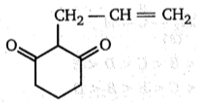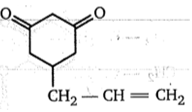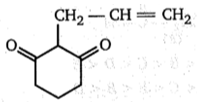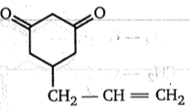A set of reagents (1 to 8) are successively reacted with the following compound

1. NaHCO3
2. 2, 4, DNP
3. Na metal
4. AgNO3 +OH
5. Fehling's solution
6. Cu2CI2 + NH4OH
7. Br2/H2O
8. NaNO2 + HCI
The reagents which give the positive test with the given compound are :
(1) 1, 2, 3, 4, 5
(2) 3, 4, 5, 6, 8
(3) 1, 2, 3, 4, 8
(4) All reagents except 1 and 8
अभिकर्मकों (1 से 8) का एक समूह निम्नलिखित यौगिक के साथ क्रमिक रूप से अभिक्रिया करता है

1. NaHCO3
2. 2, 4, DNP
3. Na धातु
4. AgNO3 +OH
5. फेलिंग विलयन
6. Cu2Cl2 + NH4OH
7. Br2/H2O
8. NaNO2 + HCI
अभिकर्मक जो दिए गए यौगिक के साथ धनात्मक परीक्षण देते हैं:
(1) 1, 2, 3, 4, 5
(2) 3, 4, 5, 6, 8
(3) 1, 2, 3, 4, 8
(4) 1 और 8 को छोड़कर सभी अभिकर्मक


A compound A has molecular formula C2Cl3OH. It reduces Fehling's solution and on oxidatioin gives a monocarboxylic acid B. A is obtained by action of Cl2 on ethyl alcohol. A is:
(1) chloral
(2) CHCl3
(3) CH3Cl
(4) chloro acetic acid
एक यौगिक A का अणु सूत्र C2Cl3OH है। यह फेलिंग विलयन को अपचयित करता है और ऑक्सीकरण पर एक मोनोकार्बोक्सिलिक अम्ल B देता है। A एथिल एल्कोहॉल पर Cl2 की क्रिया द्वारा प्राप्त होता है। A है:
1. क्लोरल
2. CHCl3
3. CH3Cl
4. क्लोरो एसीटिक अम्ल
This polymer is obtained when acetone is saturated with hydrogen chloride gas. Polymer is:
(1) phorone
(2) formose
(3) diacetonyl alcohol
(4) mesityl oxide
यह बहुलक तब प्राप्त होता है जब एसीटोन को हाइड्रोजन क्लोराइड गैस से संतृप्त किया जाता है। बहुलक है:
1. फ़ोरोन
2. फॉर्मोस
3. डाइएसीटॉनिल एल्कोहॉल
4. मेसिटिल ऑक्साइड
Which of the following is correct matched
(a) 
(b) 
(c) 
(d) 
(1) a,d
(2) a,b,d
(3) b,c,d
(4) All
निम्नलिखित में से कौन सा सही सुमेलित है
(a) 
(b) 
(c) 
(d) 
(1) a,d
(2) a,b,d
(3) b,c,d
(4) All
Stephen's reaction is reduction of:
(1) alkyl cyanide with LiAlH4
(2) alkyl cyanide with SnCl2 and HCl
(3) alkyl isocyanide with Na and alcohol
(4) acyl halide in the presence of Pd/BaSO4
स्टीफन अभिक्रिया में अपचयन है:
1. LiAlH4 के साथ एल्किल साइनाइड
2. SnCl2 और HCl के साथ एल्किल साइनाइड
3. Na और एल्कोहॉल के साथ एल्किल आइसोसाइनाइड
4. Pd/BaSO4 की उपस्थिति में एसिल हैलाइड
The identical C-O bond lengths in carboxylate ions are due to:
(1) resonance
(2) presence of carbonyl group
(3) presence of alkyl group
(4) none of the above
कार्बोक्सिलेट आयनों में समान C-O बंध की लंबाई निम्न के कारण होती है:
1. अनुनाद
2. कार्बोनिल समूह की उपस्थिति
3. एल्किल समूह की उपस्थिति
4. उपरोक्त में से कोई नहीं
Trichloroacetaldehyde, CCl3CHO reacts with chlorobenzene in the presence of sulphuric acid and produces
1. 
2. 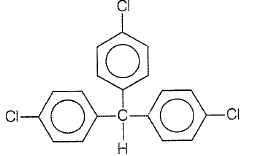
3. 
4. 
ट्राइक्लोरोऐसीटैल्डिहाइड, CCl3CHO सल्फ्यूरिक अम्ल की उपस्थिति में क्लोरोबेंजीन के साथ अभिक्रिया करता है और उत्पादित करता है-
1. 
2. 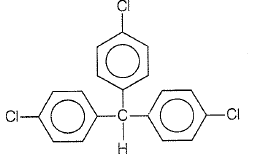
3. 
4. 
Acetone is used in:
(1) face creams
(2) vanilla
(3) nail polishes
(4) sweet smelling erasers
एसीटोन का उपयोग किया जाता है:
1. चेहरे पर लगाने वाली क्रीम में
2. वैनिला में
3. नाख़ून पॉलिश में
4. मीठी गंध वाली रबर में



